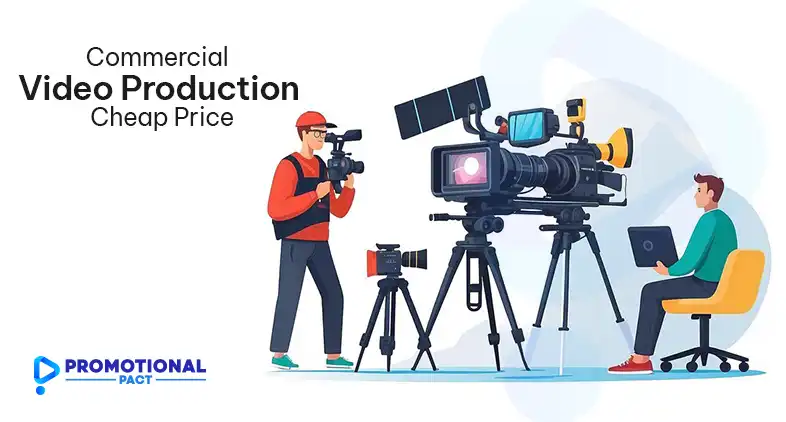Product demo videos are an extremely effective way for brands to showcase their offerings, connect with customers, and drive sales online. However, creating compelling product demo videos that clearly explain features while keeping viewers engaged is an art form that requires strategic planning and quality execution.
In this step-by-step guide, we will provide actionable tips to help you produce engaging, high-converting product demo videos tailored to your brand. So, if you are wondering how to produce the most engaging demonstration video for your product, read on.

Step 1: Define Your Goals and Target Audience
The first step is defining what you aim to achieve with your video and who you want to achieve it with. This lays the foundation for the entire production process.
Pinpoint Your Main Objective
Be very clear on the primary goal you want to accomplish. Is it to increase brand awareness? Generate more leads or sales? Have viewers share socially? The goal will inform the video style, length, content focus, and call-to-action.
For example, if your goal is to increase conversions, focus on product benefits that encourage purchasing rather than brand storytelling. Include a clear CTA prompting viewers to buy.
Analyze Your Target Audience
Conduct thorough audience research using surveys, interviews, focus groups, and examination of buyer personas.
Uncover key details like demographics, psychographics, pain points, objections, preferred content style, technical expertise level, and existing brand sentiment.
Tailor Tone and Complexity
With deep audience insights, you can tailor your video’s tone, style, vocabulary, and complexity specifically to resonate.
Adjust language based on expertise levels. Use humor if they respond to that. Emphasize product benefits that address audience pain points.
Step 2: Craft an Impactful Script

The script forms the backbone of your video. Take time to craft it thoughtfully.
Highlight Relevant Features and Benefits
Carefully determine which features and benefits to focus on based on your audience research. Highlight the ones that they will find most appealing and convincing.
Use Conversational Language
Write the script in clear, concise, everyday language. Avoid overly formal or stiff language. Use a conversational tone and vocabulary tailored to your audience.
Include Storytelling Elements
Incorporate storytelling elements to connect emotionally with viewers rather than just stating dry facts. Build narrative tension and humor when appropriate.
Directly Address Pain Points
Call out your audience’s pain points directly in the script and explain exactly how your product solves them. This builds trust and confidence.
End with a Solid CTA
Wrap up the script with a clear call to action based on your goals, like visiting your website, signing up for a free trial, or purchasing.
Step 3: Select the Right Presenter

Your presenter or host will be the face of your brand. Take time to find the perfect fit.
Match Presenter Style to Audience
Select a presenter style based on your audience analysis. For example, they may respond best to an enthusiastic style versus a more earnest one.
Consider Different Presenter Types
Leverage influencers, brand advocates, satisfied customers, industry experts, or your own product team to present. This adds credibility.
Set Guidelines and Expectations
Provide the presenter with guidelines on how you want key messages delivered, including tone, speaking pace, body language, wardrobe, and energy level.
Conduct Thorough Rehearsals
Take time to rehearse and provide direction until the presenter can deliver the script naturally. Have them become intimately familiar with the product.
Step 4: Invest in Professional Production

Your production standards directly impact how polished and engaging your video turns out. Here are tips for premium quality:
Use Professional Filming Equipment
Invest in pro gear like DSLR cameras, stabilized gimbals, wireless lavalier mics, and cinematic lighting setups. This noticeably boosts visual quality.
Include Relevant B-Roll and Graphics
Capture plenty of complementary b-roll footage showing your product in use along with any relevant graphics, animations, or text overlays.
Follow Cinematic Filming Techniques
Use camera movements, framing techniques, and shot compositions that follow cinematic guidelines. This creates a more dynamic, visually engaging video.
Record High-Quality Voiceover
For voiceovers, ensure the audio is recorded in a professional studio environment. Use broadcast-quality mics and audio interfaces.
Step 5: Edit Seamlessly
Smooth, well-paced editing is crucial for maintaining high audience retention.
Use Professional Editing Software
Invest in premium software like Adobe Premiere Pro or Final Cut Pro for maximum editing capabilities and seamless export.
Maintain an Engaging Pace With Quick Cuts
Perform jump cuts and quick editing techniques to maintain an upbeat pace that keeps viewers interested.
Use Graphics and Music Strategically
Insert graphics, labels, animations, and background music at key points to highlight or emphasize important information.
Boost Engagement With Interactivity
Consider adding interactive elements like on-screen CTAs, quizzes, or hotspot annotations to encourage further viewer engagement.
Step 6: Amplify Reach With Promotion

Don’t keep your video hidden – implement a distribution strategy to get it in front of the right audiences.
Share on Multiple Platforms
Upload to YouTube, Facebook, Instagram, etc. Insert it on your website and in sales emails/pages. Promote it across all of your owned channels.
Run Paid Video Ads
Consider allocating a budget to run paid ads on platforms like YouTube and Facebook to further amplify video reach.
Send Directly to Existing Customers
Email the video out directly to your existing customer base who may be interested in learning more about your evolving product offerings.
Analyze and Continuously Optimize
Use analytics to assess video performance across platforms. Experiment with different thumbnails, titles, promotions, edits, and more to optimize based on data.
Summing Up
Creating compelling product demo videos requires upfront strategic planning and investment in quality production. But the effort pays off through increased brand awareness, customer engagement, and sales.
Use this comprehensive guide to produce product demo videos tailored specifically to your goals and audiences. Pay close attention to audience research, scripting, presenter selection, filming practices, editing techniques, and promotion strategies.
With these tips, you can create product demo videos that effectively showcase your offering in an engaging way, connecting with online audiences and propelling your business growth.

